Reading for Our Lives turns 1 today! And bringing this parenting book to the world has been my greatest professional accomplishment so far. It took years of research, interviews, and synthesis to get it into print. The writing itself was a bear, but so was navigating the publishing industry to find a great agent, secure a book deal, and launch—all during a pandemic.
Twelve months into my life as a published author, I’m proud to report that I made 38 speaking appearances and earned more than 100 media features related to the book, including a segment on CBS Mornings and an OpEd in TIME. The book has reached more than 5,000 parents, caregivers, teachers, and literacy advocates and garnered numerous 5-star reviews.
But don’t get me wrong, I’ve had my share of mishaps on my author journey as well. One low light was traveling 1,000 miles to a book signing where the conference bookseller forgot to order my book. Yes, seriously. Astounded, angry, and hurt, I had to muster all of my professionalism and poise to salvage what I could of that disastrous trip. I had to quiet my wounded ego and use my time on site to connect with prospective partners and reconnect with existing ones. Most importantly, I had to remind myself of why I do this work in the first place. My mission is not to sell books—that’s just a means to an end—but to send a message about our national literacy crisis and the responsibility we all share to reverse it.
With or without a book in hand, I want to help people understand the costs of allowing millions of kids to graduate high school without the literacy they need to thrive in the modern, global workforce. I want to connect the dots between low literacy and unemployment, homelessness, chronic health issues, incarceration, and so many other problems we face. I want to spur more parents to own their roles as children’s first teachers, vocabulary builders, and educational advocates.
Someone once said that we overestimate what we can accomplish in one year and underestimate what we can do in ten. I feel that in my bones. So here’s to celebrating year one wins—knowing that there’s much, much more to come!
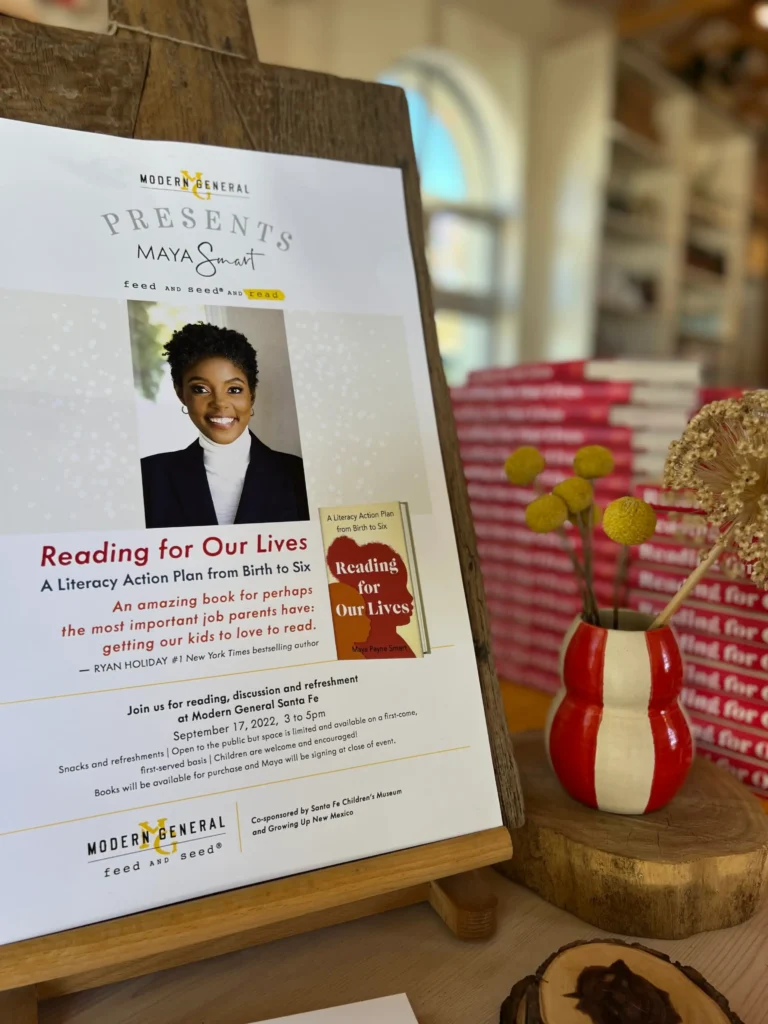
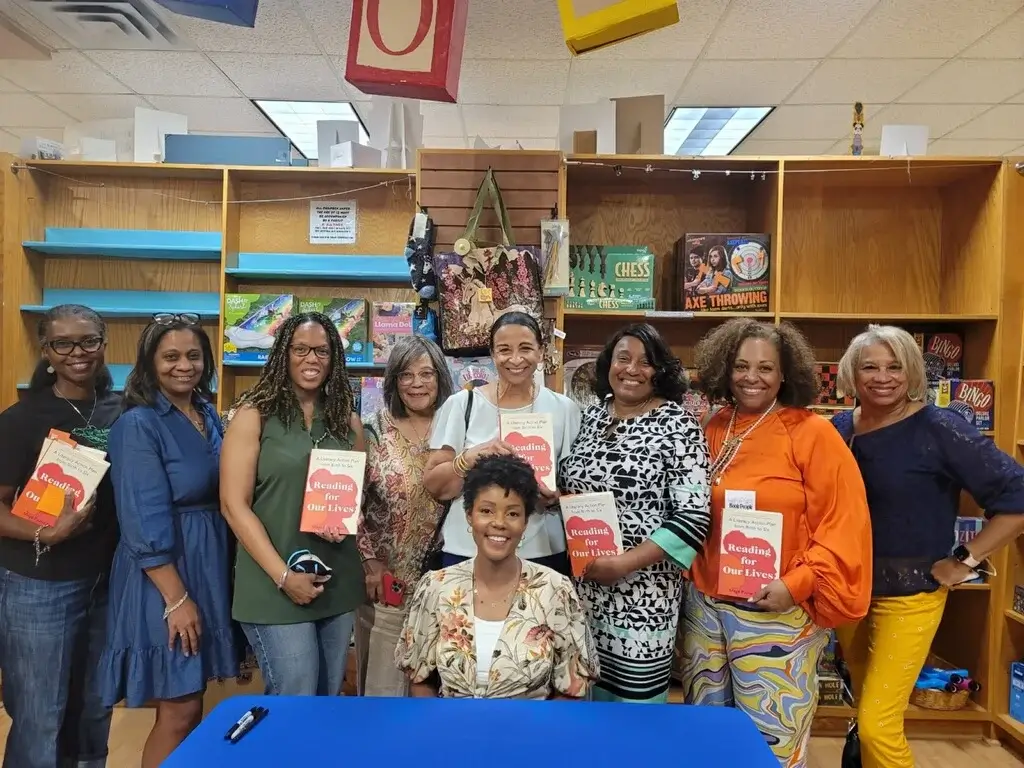
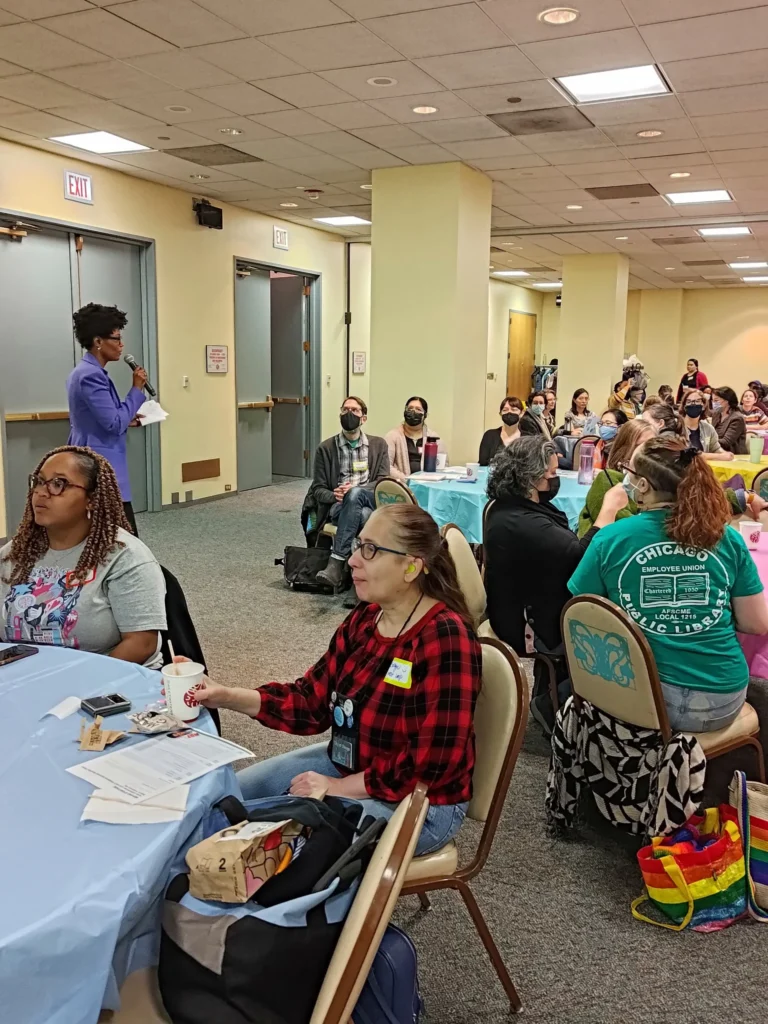
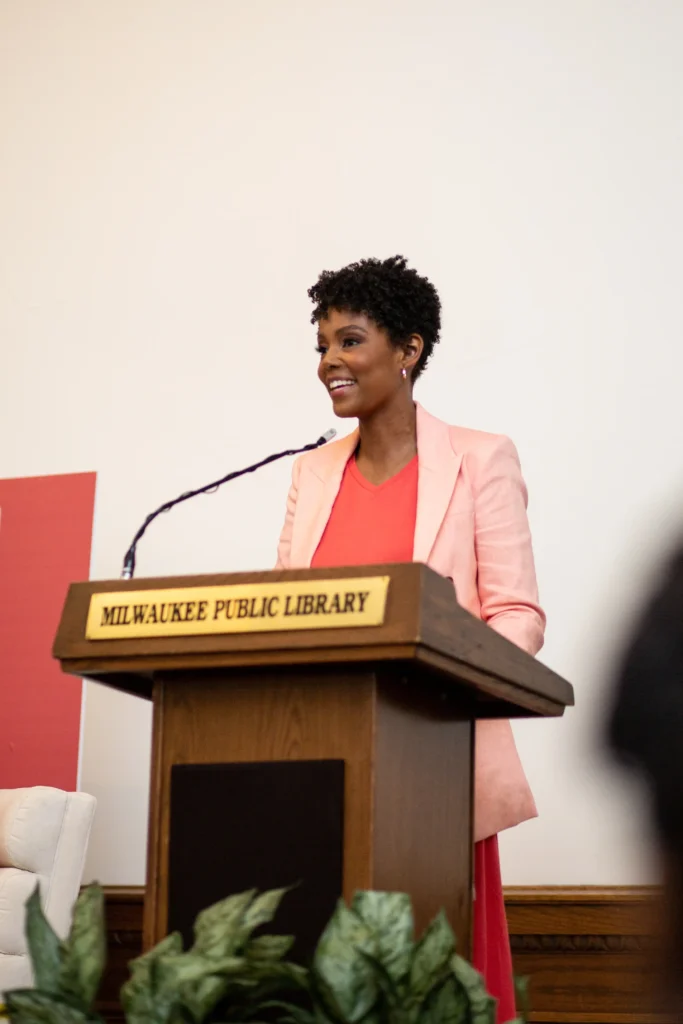
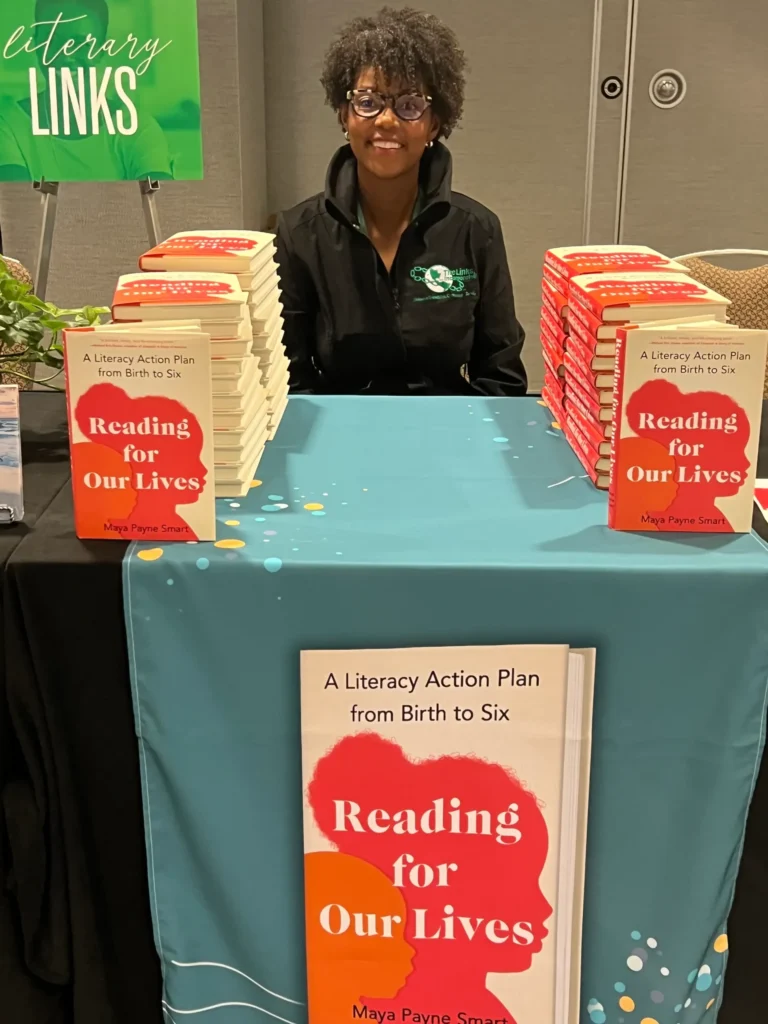
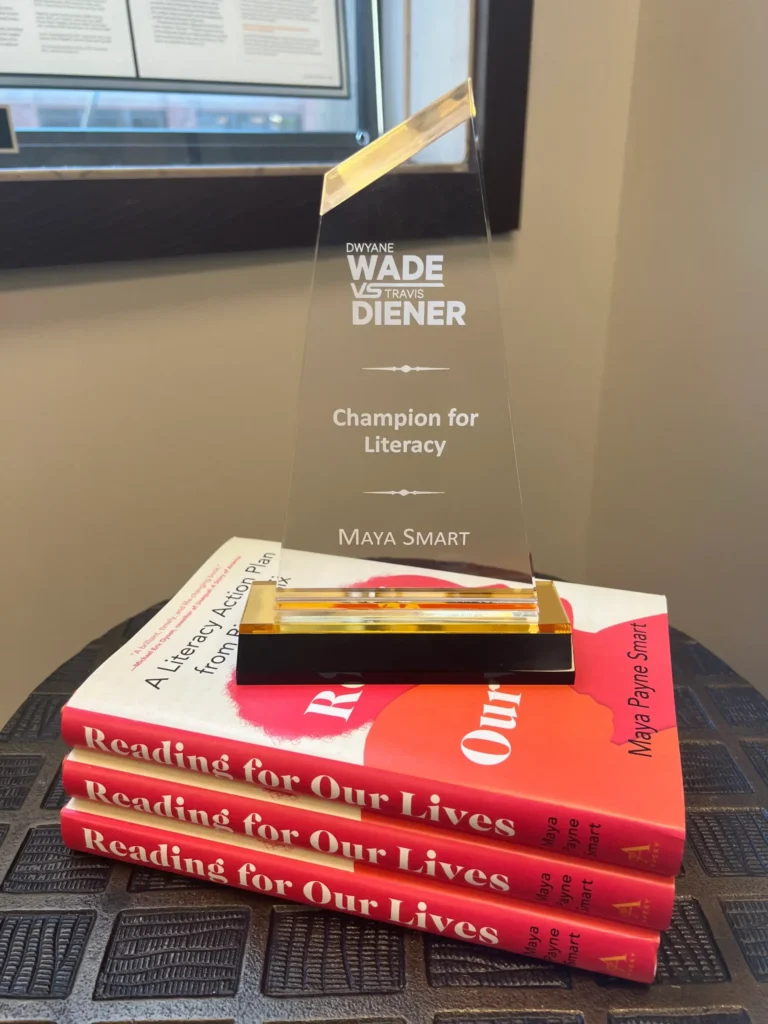
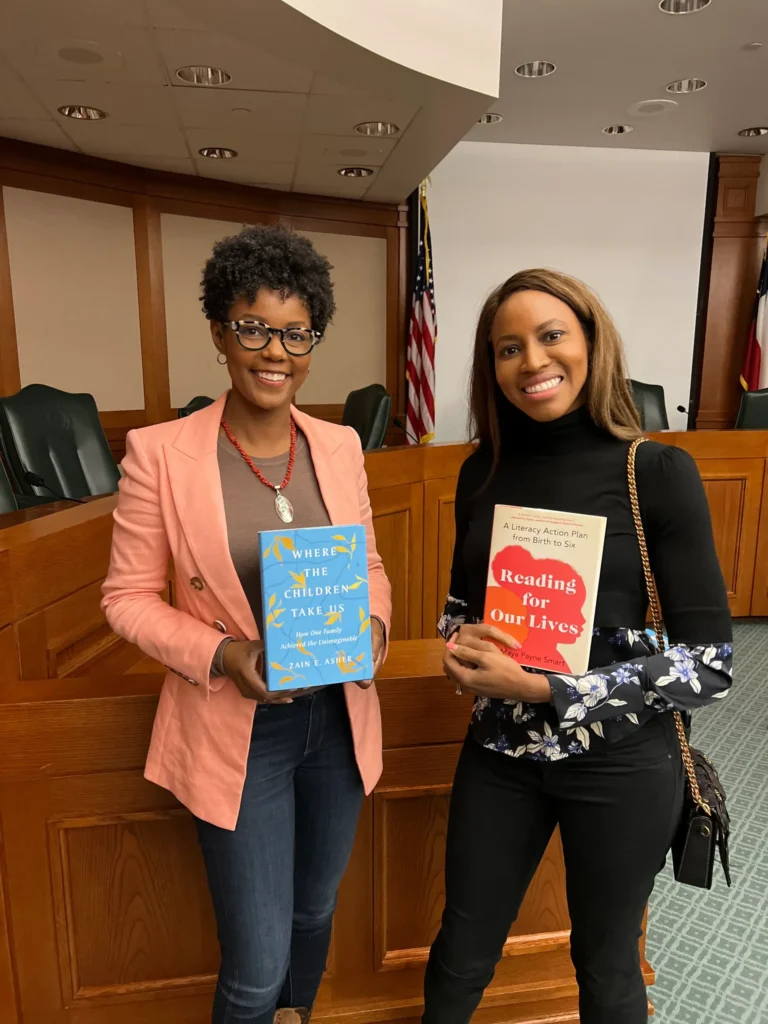
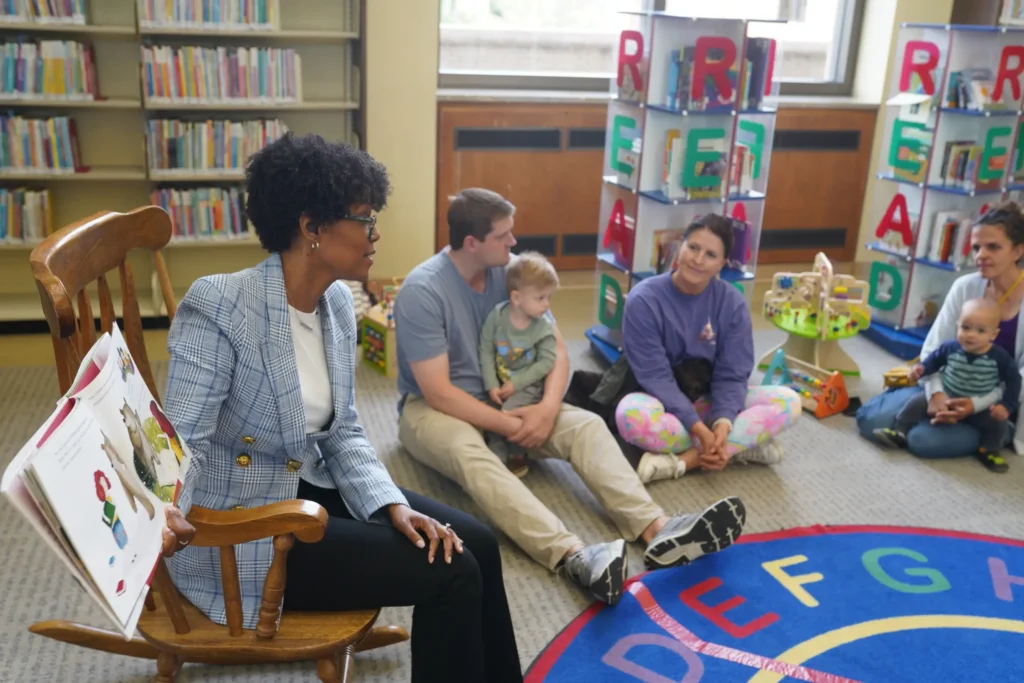
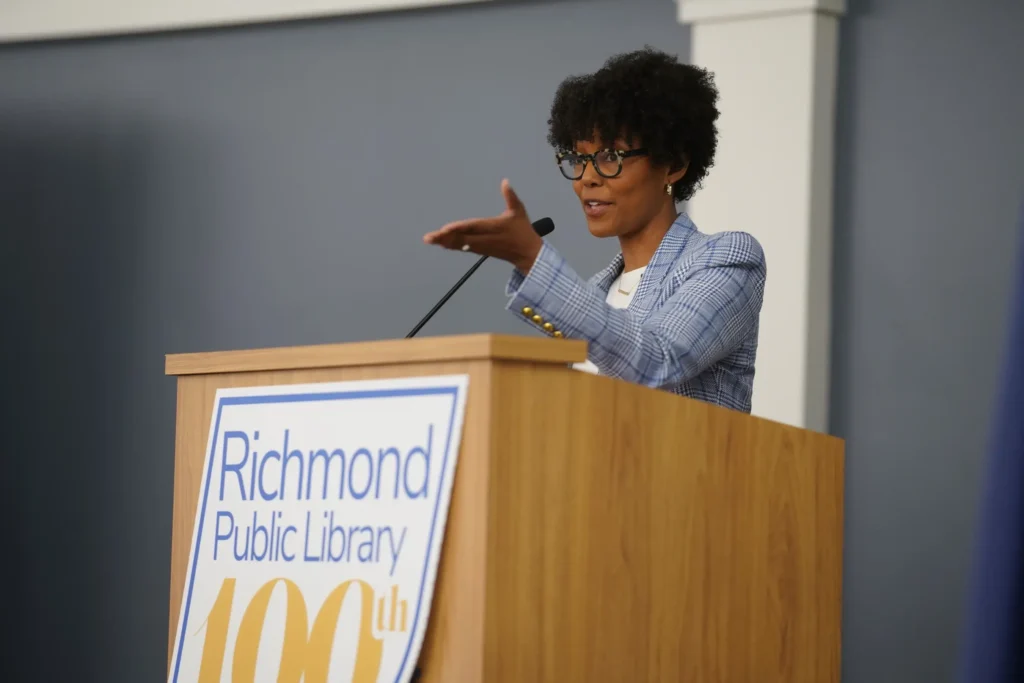
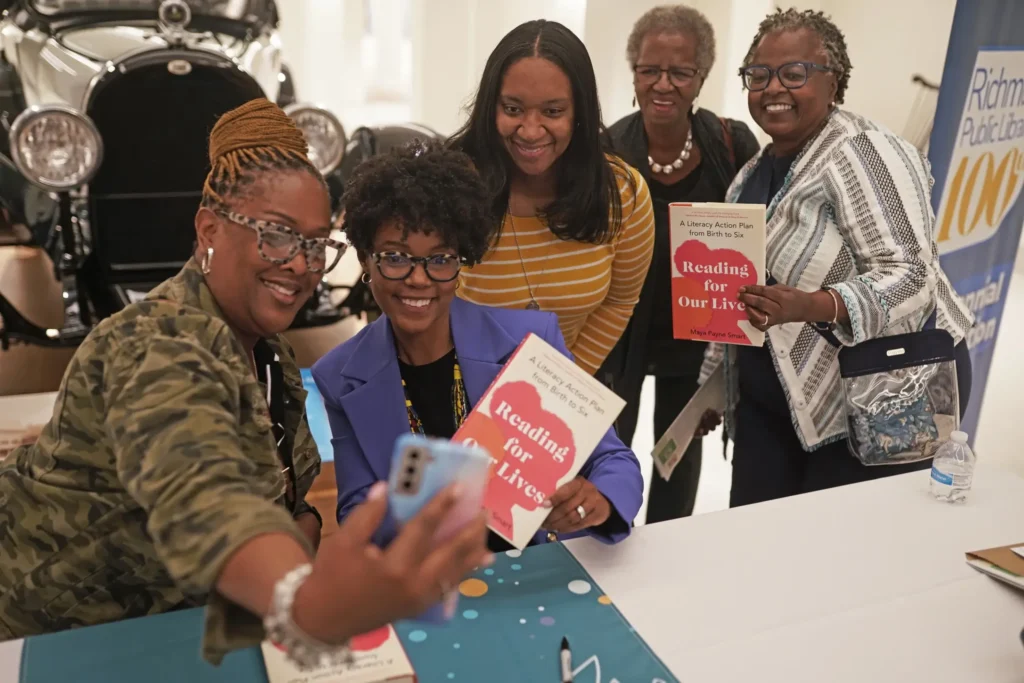
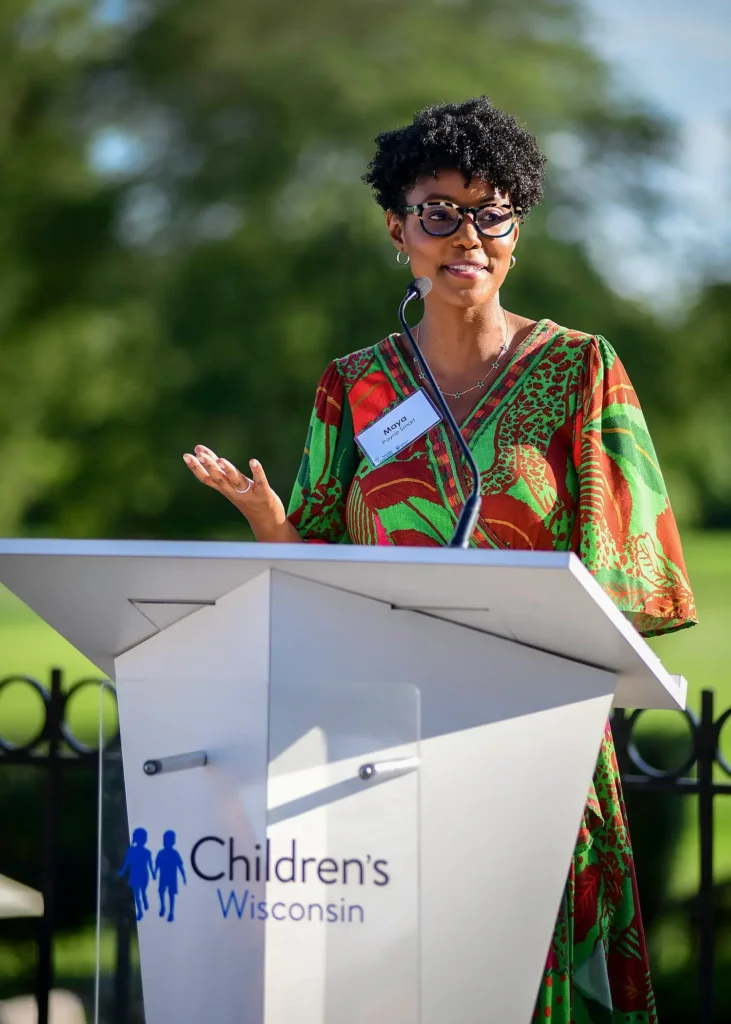
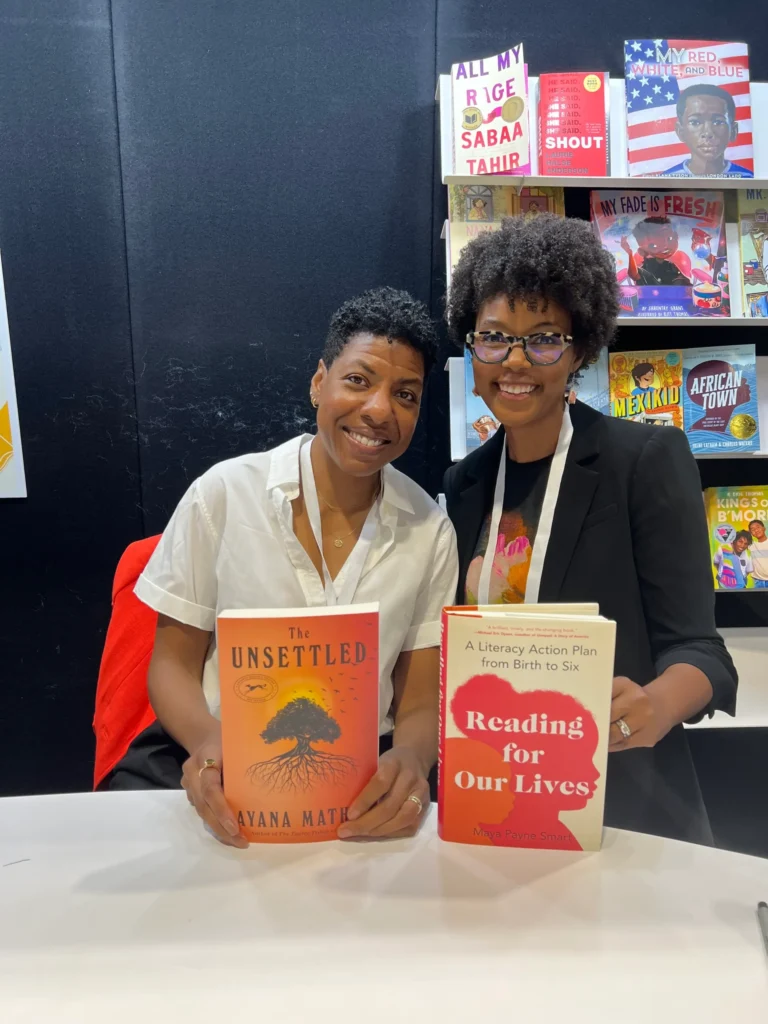
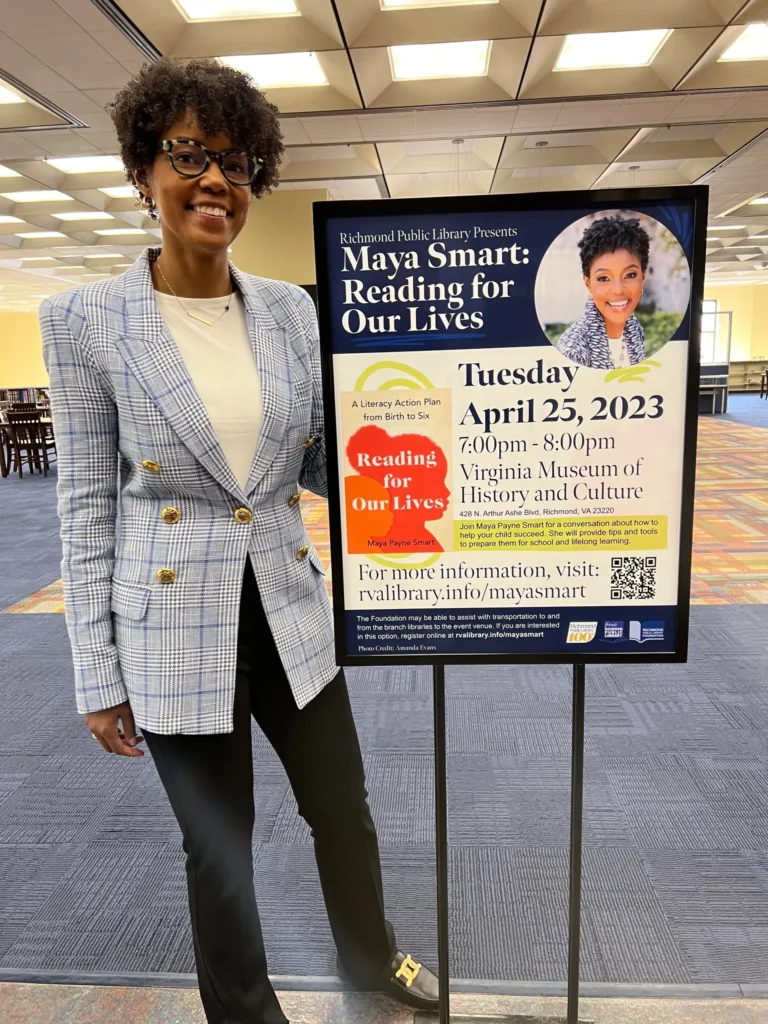
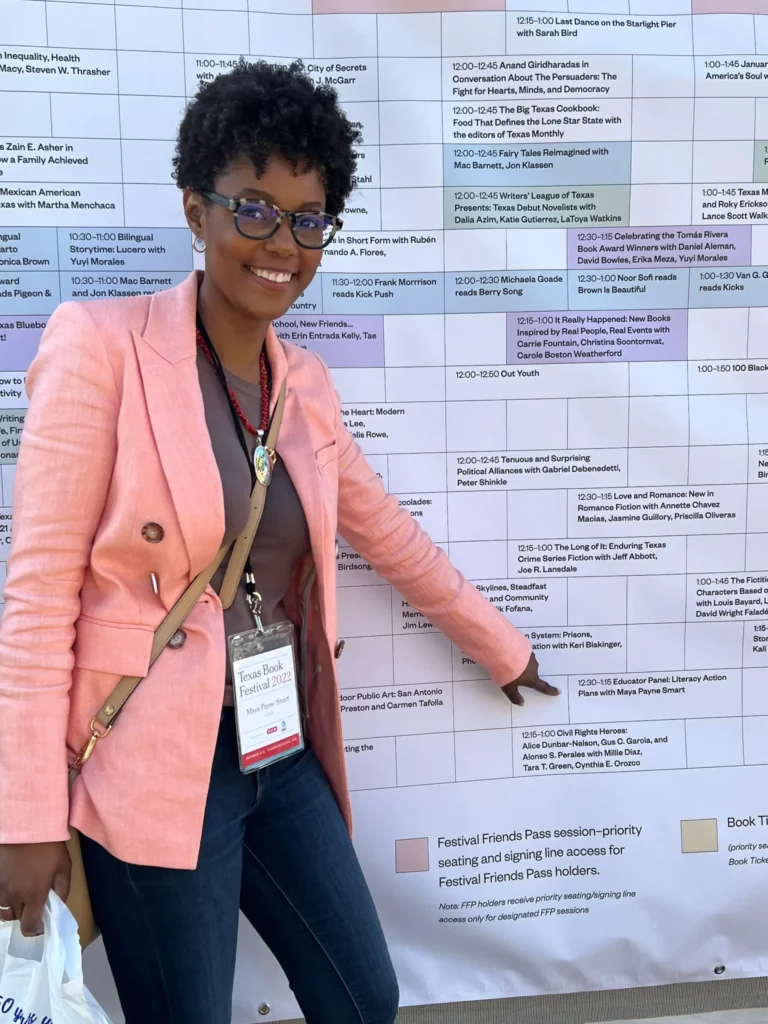
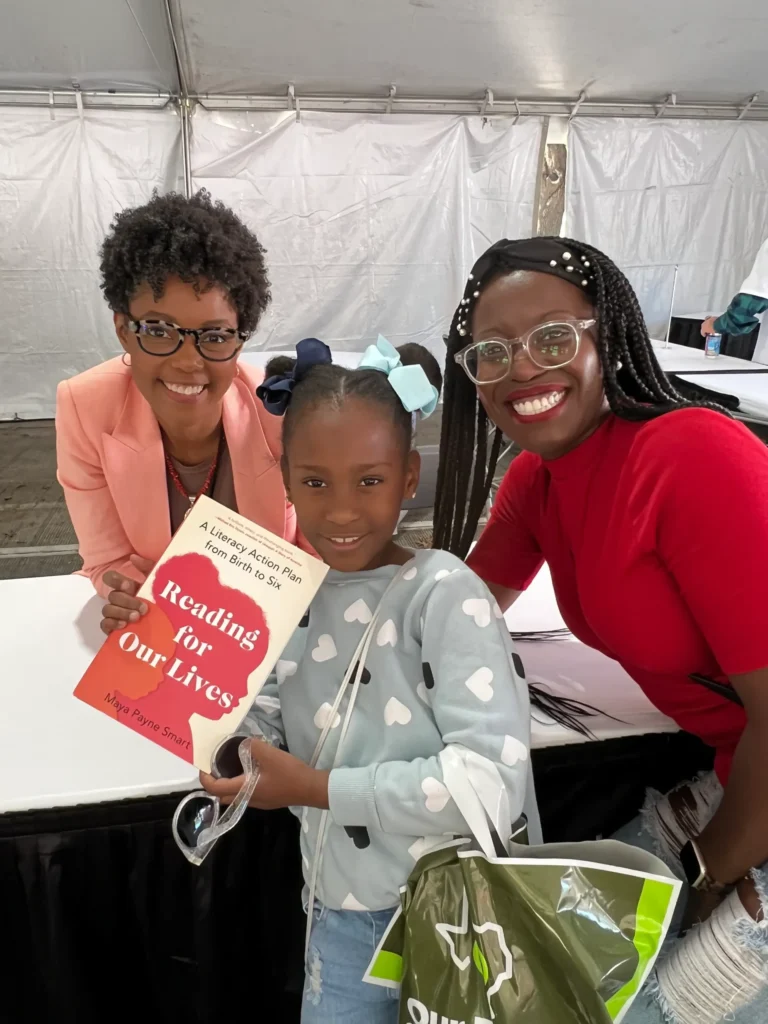
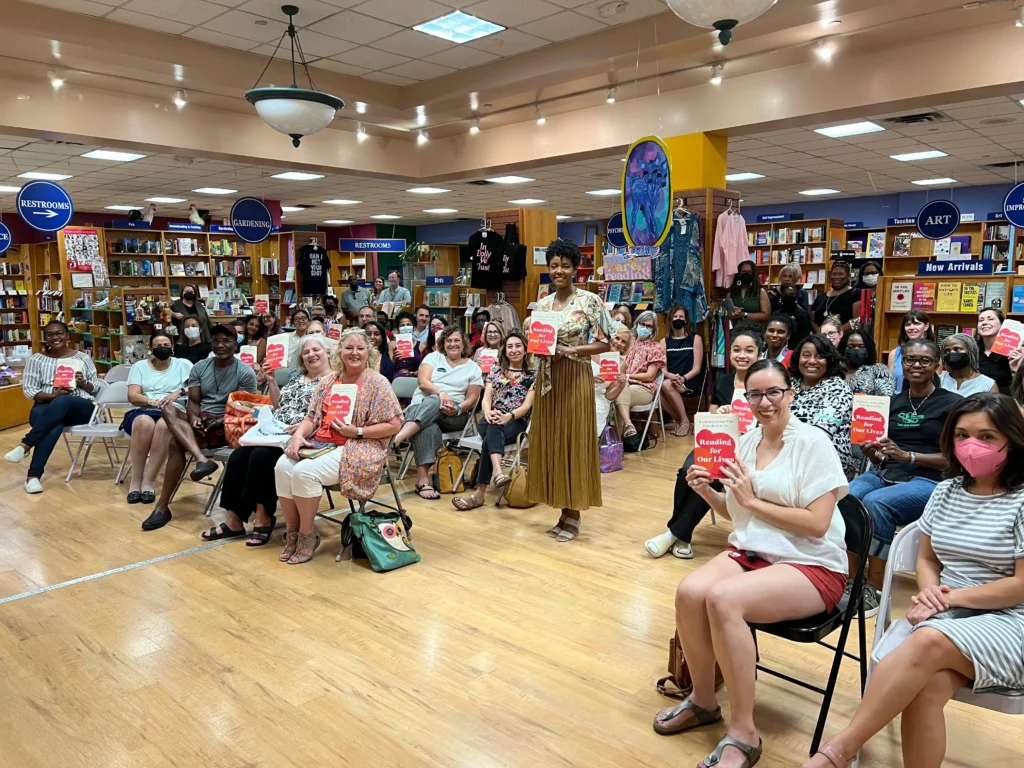
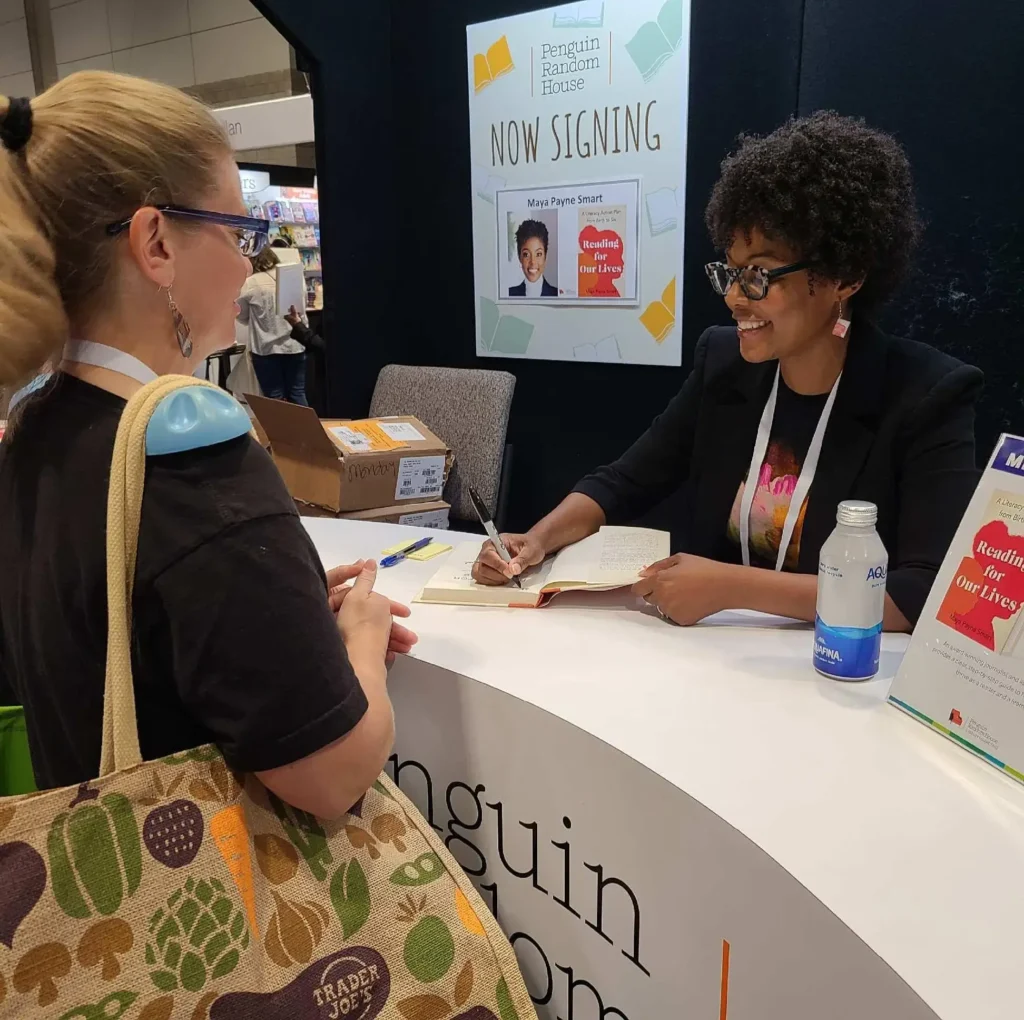
The question is not whether we can afford to invest in every child; it is whether we can afford not to.
Marian Wright Edelman
Heavy rain once filled our local water supply with so much silt and debris that treatment systems failed. Local authorities and media raised the alarm that residents should boil their water for seven days straight or risk illness. Restaurants shut down. Families bought bottled water by the shelf-full. Hospitals procured truckloads of certified water and switched operating rooms to alternative sterilization methods. Once the boil notice was lifted, we all flushed our pipes, dumped ice machines, and resumed life and work as usual.
The crisis was obvious and urgent. The response clear and immediate. The end apparent.
What’s happening with our nation’s pipeline to reading, if you can call it that, is just as urgent, yet hidden. There is no infrastructure in place to raise a nation of readers, let alone a coordinated response to breakdowns.
Judged by international standards, two disturbing findings characterize U.S. adult literacy in recent decades: basic skills are weak overall (despite relatively high levels of education) and unusually persistent across generations. About one in six U.S. adults have low literacy skills, compared to, for example, one in twenty in Japan. That’s approximately 36 million U.S. adults (roughly equal to the combined populations of New York, Michigan, and Minnesota) who can’t compare and contrast written information, make low-level inferences, or located information within a multipart document. And, worse still, socially disadvantaged parents in the U.S., compared to those in other countries, are more likely to pass on weaker skills to their children.
There is no infrastructure in place to raise a nation of readers.
But here’s the part that all parents must understand: this crisis brews early. Much of the tragedy of low adult literacy has its roots in infancy, when early experiences launch lifelong learning trajectories. During this time, more than a million new neural connections are formed per second, and future brain development rests on the soundness or fragility of those earliest links. In fact, evidence from anatomical, physiological, and gene-expression studies all suggest that basic brain architecture is in place by around two years old and later brain development is mostly about refining the major circuits and networks that are already established. And, critically, it’s caregivers’ nurturing, supportive back-and-forth verbal engagement in a child’s first years that literally stimulates brain function and shapes brain structure.
For too long, as a nation we’ve tested school-aged kids, reported the results, and acted like oversight is a reading achievement delivery system. But literacy doesn’t flow from federal mandates through state assessments and district policy to classroom instruction and students’ brains. Standardized assessments are valuable, but limited, alert systems. Mere indicators, they can sound when our educational system fails to meet certain expectations. But they don’t illuminate the root causes of that failure or tell us what to do about them. Alarms ring; they don’t teach. And often when an alarm rings for too long, we tune them out.
Today, alarms abound. In the U.S., 5-year-olds have “significantly lower” emergent literacy than kids in other countries that have comprehensive early-childhood education and national paid parental leave. In a 2019 reading assessment, only one-third of a nationally representative sample of U.S. fourth- and eighth-grade students scored at a proficient level. Reading scores of the lowest performing 9- and 13-year-olds have dropped since 2012. And—most devastatingly—just 14 percent of U.S. 15-year-olds read well enough to comprehend lengthy texts, handle abstract or counterintuitive concepts, and evaluate content and information sources to separate fact from opinion.
And don’t even get me started on the state of children’s reading interest and enjoyment. National surveys reveal skyrocketing percentages of 13-year-olds who say they “never or hardly ever” read for fun—29 percent in 2020, compared with 8 percent in 1984. The sad truth is this: for the past few decades, the majority of American kids have been shuffled from grade to grade without ever reading well enough. And we’re not talking about children with profound learning or intellectual disabilities. These are capable students whose reading development is hobbled by a devastating mix of untapped opportunity at home and inadequate instruction in schools.
Incredibly, that’s despite the fact that elementary schools devote more time to English, reading, and language arts than anything else—often more than 30 percent of instructional time. Teachers struggle to meet the diverse needs of learners who arrive in their classrooms with little knowledge of the alphabet, the sounds of English, and the relationships between letters and sounds. They have trouble instilling these basics, let alone expanding the oral-language development, vocabulary, and background knowledge that allows kids to decode and comprehend words in print.
We can’t afford to continue pretending that a hodgepodge of reactivity and remediation can get millions of children reading well enough to flourish. We can’t leave whole populations without the skills, knowledge, and community support that underpin full participation in society and expect things to turn out well for them or for us. We all suffer when we don’t muster the collective will, skill, and integrity to ensure that every child learns to read.
To attain the consciousness, solidarity, and equity our society so desperately needs, we must be informed and deliberate in nourishing early literacy. So, too, if we are to engender the level of citizenship, critical thinking, and limitless potential that our children and society deserve. And because the odds of success are set before school begins, we’ve got to start at home.
Parents and early caregivers hold the key. Period. We will never see the promise of mass literacy fulfilled until parents—our children’s first teachers—understand how reading skills develop and how to spur them along.
Premium Fuel
Parents are often said to be kids’ first and best teachers. The “first” part is guaranteed, but the “best” part must be earned. When it comes to literacy, evidence (not intuition) is the best way to judge what works.
Literacy is one of the most-studied topics in academia. There were already more than one hundred thousand studies on how children learn to read in 1999 when Congress convened the National Reading Panel, and the number has continued to climb. A search for the phrase “reading development” in the National Library of Medicine’s biomedical database finds more than 2,500 papers published in 2021 alone. Conferences, publications, and whole careers are devoted to bridging the divide between what research in linguistics, psychology, cognitive science, and education tells us about how reading develops and the practical matter of sparking and accelerating these developments in children.
To attain the consciousness, solidarity, and equity our society so desperately needs, we must be informed and deliberate in nourishing early literacy.
When parents engage with good research and allow it to inform our decisions and behavior, we benefit from the wisdom of evidence and analysis that’s far more revealing than our individual experience or perspective alone. Recent discoveries in neuroscience, molecular biology, and epigenetics alongside years of behavioral and social sciences insights can also boost our empathy by giving us deeper insight into the child’s environment and experience. I know I always feel better about my decisions as a mom when they marry responsiveness with effectiveness. I want to do not only what feels right, but also what works.
Routine Maintenance
Becoming literate is considerable work for a child’s growing brain, but nurturing it doesn’t have to be. Beginning in infancy, parents can foster literacy with warmth, responsiveness, dialogue, and turn-taking. Over time these practices can become core habits and make a lasting impact. These are everyday strategies to help you find the perspective and build the muscle needed to relate to your children with intention, consistency, and generosity over the long haul.
The fact is, once parents know what the research says about what kids need (and when), there’s a practical matter of doing those things day in and day out… for years. For that, we need parent-tested and -approved techniques that are easy to fit into busy lives. Putting the time and energy into establishing strong practices early on can rev up lifelong benefits and prevent costly breakdowns.
Roadside Assistance
A lot of parenting media treats families as islands. Read this and teach that, the books advise, and your child will learn. But in reality, reading develops within a dynamic web of relationships and experiences.
Parents need ongoing support from community members, including friends, family, neighbors, teachers, librarians, and others, to keep their kids on track. There’s often also a role for the just-in-time intervention of specialists, from speech and hearing therapists to learning and reading experts, depending on a child’s particular needs. This is the equivalent of roadside assistance.
But we’d be foolish to take a back seat, given the indisputable evidence of our power to launch a child’s literacy. Every child deserves full literacy to thrive, and instilling the strongest possible base prior to school gives a child a real shot at gaining the skills and knowledge they‘ll need long term.
When I was growing up, my dad always told me to front-load my effort. He said, “Work as hard as you can to learn as much as you can as fast as you can.” That way, when inevitable distractions and unforeseen circumstances arrived, I’d have some wiggle room. Starting strong creates a chance at recovering from setbacks. So it goes with your child’s literacy: you will never find a better time than now to launch a reader.
Edited and reprinted with permission from Reading for Our Lives by Maya Payne Smart, published by AVERY, an imprint of Penguin Publishing Group, a division of Penguin Random House, LLC.
Copyright © 2022 by Maya Payne Smart.
Enjoyed this excerpt? Get the book!
Children grow and develop at incredible rates between from birth to three years old, and parents have a front-row view of it all. So it bodes well for kids’ long-term literacy when caregivers use our special vantage point to monitor developmental milestones and proactively seek support when we suspect developmental delays.
Yet, many parents don’t know that they can access federal funds for early-intervention services, even without a referral from a pediatrician. Funds are available for children experiencing needs in areas including gross and fine motor skills, speech and language, and social or emotional areas.
That’s why I reached out to Ann Becker and Shannah Seyfert of Penfield Children’s Center, which administers Birth to Three programming in Milwaukee County, Wisconsin. I asked them to explain why early intervention matters, who parents can talk to if they’re concerned about their child’s development, and what kinds of support services children can receive.
Watch the video for tips about how to tell if your child has a developmental delay and what to do if you suspect an issue. Then spread the word about early-intervention services in your neck of the woods. There are federal funds available in every state, through the Individuals with Disabilities Education Act Part C, although there are some variations in the program specifics.
Here’s a breakdown of key topics from my chat with Ann and Shannah:
- Why parents should pay attention to developmental milestones issued by the CDC and other reputable organizations.
- Red flags that parents should attend to when it comes to early-childhood development.
- The importance of honoring your intuition as a parent, documenting your observations, following up on concerns right away, and seeking outside support and assessments when you’re worried.
- How healthy relationships are the foundation of a child’s brain development and skills.
- The importance of prenatal care and well-child checks at the pediatrician’s office.
- How services are delivered through a primary coach and an extended network of specialists, such as an occupational therapist, a physical therapist, a speech therapist, an educator, or a social worker, depending on their needs.
- How anyone—parents, physician’s offices, and child care centers—can refer a child to get early-intervention services on the county website.
- What to expect if your child is referred for assessment, from the initial referral to an interview to an assessment to getting a family service plan if your child qualifies.
- How children transition out of the Birth to Three program, and what kind of ongoing support is available through the public schools’ early-childhood system.
My chat with Penfield Children’s Center’s Birth to Three program was so informative and encouraging. I want all parents to see how easy it is to raise your hand and express any concerns you have about your child’s development. Your early invention can make a lifelong difference for your little one, so don’t hesitate to follow your intuition when it comes to seeking assessments and support for your child.
Links and resources mentioned in this conversation:
Like this post? Share it!
If you’re raising a baby or small child, you’ve probably felt pangs of parental guilt coming from some surprising places. And one unfortunate trigger can be the subject of reading to your kids. Some parents beat themselves up for not doing it, while others worry that they don’t read often enough or long enough. (And, let’s face it, when does anything really feel like “enough” for our little charges?) Still others fret if their toddler doesn’t seem to listen, or squirms or wanders off during story time. Many worry that their young ones don’t seem that “into” books—and that it’s their fault.
But pediatrician and reading advocate Dr. Dipesh Navsaria has a reassuring message for parents. It turns out that what matters is interacting with kids and exposing them to books, not fulfilling some unattainable ideal. I’ll share the doctor’s key advice below, but first, a little more about this medical-doctor-slash-reading-advocate.
While studying medicine at the University of Illinois, he stumbled upon a children’s-book research library on campus. Inspired, he followed his curiosity about young people’s literature all the way to pursuing a master’s degree in library science in the middle of his med-school career. Now he’s a pediatrics professor at the University of Wisconsin and helps parents foster little ones’ language and literacy skills as the founding medical director of Reach Out and Read Wisconsin.
The nonprofit serves 170,000 children and their families via doctors’ offices in 56 counties across the state. Participating pediatricians deliver books to children (more than 250,000 to date!), but even more critical is the support they provide to parents as kids’ first and best teachers. They help ensure that shared reading is an everyday part of young children’s lives and that parents feel capable and confident about reading with their kids, Navsaria says.
Watch my interview with Dr. Navsaria, or read the highlights below, to learn how shared reading contributes to kids’ flourishing—and why read-aloud time is valuable even when it’s squirmy, messy, and short. Plus, you’ll discover how to make the most of pediatrician’s visits and how to refer your child for early-intervention services if you think their development is lagging.
Here are key tips from our conversation:
Keep Reading Time Flexible and Conversational
Giving a child a book during a checkup visit gives doctors a powerful window into a little one’s wellbeing, Navsaria shared—much more quickly and viscerally than rote answers to checklist questions.
“The toddler who takes that book and toddles over to their parent and holds it out in that read-to-me gesture, they’ve told me a ton,” Navsaria says. “Not only have they told me about the developmental domains (fine motor, gross motor, maybe some language, whatever), they’re also telling me something really important … [about] relational health, the health of relationships.”
So what does that mean for you as a parent? It highlights that when you read with your child, you’re giving them so much more than words on the page. You’re giving them opportunities to explore the physical book itself, to hear the sounds of English (or whatever language you read in), to discover more of the world and the words that describe it, and to engage with an adult who loves them.
And, wonderfully, those benefits of reading together exist whether your child is sitting still, gazing at the page or not. This message is particularly important for parents of toddlers, who often express concern that their children are wriggly and “don’t like” books. In reality, Navsaria said, it’s usually just toddlers being toddlers, while parents read at them instead of with them.
Instead of diligently narrating the text and hoping to capture their attention, Navsaria advises, “pull them into your lap, give them the book, let them turn the page, let them go backwards in the book, pick up random pages, talk about the pictures, ask questions about pictures.”
“It doesn’t matter if you never read the story,” he explains. “I’m not going to ask you to write an essay on it. … When [parents] can deviate from that script and instead just have fun interacting, that works really well with a squirmy toddler, and then when they’re three or four and their attention span is much better, they’re more likely to listen to the book.”
Permission granted to be flexible—and conversational—when reading with littles.
Elevate Doctor Visits from Check-Ups to Level-Ups
Often parents head into well-child visits at the pediatrician’s office with low to no expectations. They think the child will get weighed and measured and maybe given an immunization. But there’s an opportunity to use those brief engagements to level up your knowledge as a parent, too.
While doctors have a list of specific items they want to cover during a visit, they also expect and appreciate when parents ask questions or bring up concerns. In fact, Dr. Navsaria says that when he trains pediatricians, he advises that the very first question they ask parents should be, “What questions or concerns do you have for me?” The opening invites the parent into discussion and puts the family (not a visit checklist) at the center of the appointment.
The leading national pediatrics guidelines, like the Bright Futures and Nelson Textbook of Pediatrics (both on the bookshelf behind Navsaria during our chat), endorse this kind of engagement with families, he says. The guidance encourages doctors to talk to parents about learning, behavior, and development. “Those works tell us about how important it is that we engage with families and discuss all these things and not just things that people might view as traditionally medical,” he says.
If your checkups feel, instead, like you’re being asked a bunch of rapid-fire questions and that’s it, he advises looking for another healthcare provider.
Trust Your Gut If You Think Your Child is Missing Milestones
If you’ve ever worried that your child was falling behind other kids their age in speech, movement, or some other area, let your pediatrician know. “Tell us what it is you’re seeing,” Navsaria advises. “You don’t need to use the right terminology. Our job is to help piece that together.”
“If a parent comes in and says, ‘I’m concerned about my child’s development,’ that’s almost automatically a reason to refer,” he explains. “Parents spend untold hours around their child. I get to spend a very short amount of time. I have the benefit of having seen thousands of children …. But any individual child, I don’t have a whole lot of time with them.”
Navsaria also explained that if a parent is concerned about their child’s developmental progress and feels they’re not getting proper attention or reassurance from their doctor, they can usually apply directly to state early-intervention services. (See my interview about Birth to Three early intervention services and developmental delays here.)
So, as you can see, pediatricians can be valuable resources and sounding boards for parents on the raise-a-reader journey. Take this expert’s advice and pair your own observations with your pediatrician’s professional experience to navigate your little one’s next steps in language, literacy, and learning. Staying flexible, asking questions, and trusting your instincts go a long way toward your child’s success.
Reach Out & Read Podcast
To hear more engaging conversations with experts in childhood health and literacy, check out the Reach Out & Read Podcast.
Listen NowAbout a year ago, on my daughter’s birthday, I received an email from Linda Mitchell, the executive director of Metro East Literacy Project in East Saint Louis. I’d never met her before, but she wrote a heartwarming note that “we’re kindred spirits when it comes to literacy.” It was exactly the kind of reader mail that every author hopes to receive—confirmation that people have read your work, engaged with its ideas, and felt strongly enough about it to reach out.
Linda had subscribed to my weekly newsletter and read my OpEd in TIME. That day in her email she shared a bit about her own literacy advocacy and wrote “Thanks for doing all the wonderful work you do to help families live better lives through literacy. I want to be like you when I grow up. :).”
Today, I’m returning the compliment by going on record as a fan of Linda’s grassroots work to empower families with literacy. She has been instrumental in building the confidence and home libraries of parents in her community. Linda spent years as a traditional classroom teacher in grades one through twelve, then worked as a parent educator with the Parents As Teachers program. These experiences led her to an epiphany: “Literacy begins at home. That’s the powerhouse.”
So she began delivering books to families in underserved neighborhoods and founded the Metro East Literacy Project. Nowadays, people call her The Book Lady. Notable Human Films produced a mini-documentary about Linda that powerfully communicates her deep dedication to family literacy, inspired by her grandmother’s inability to read.
In the documentary, Linda explains, “It just makes me mad when I think about my grandmother, who was denied the right to read, wasn’t taught to read and write, and before her, all the other enslaved people who were denied that. And there’s a reason for that, because reading is so powerful.”
“I credit everything in my life with having that skill,” she says. “I can teach myself. I’m teaching myself languages. I’m teaching myself anything because I can decipher those words on a page I can comprehend. And to think that there are people who are not able to do that and navigate their lives, and they suffer. They suffer because of it. I feel like it’s my divine assignment. And so no matter how steep the hill is, I’ve got to keep climbing, because there’s somebody, some family out there who’s going to be free, their literacy is going to be their liberation. It’s going to take them higher, and that’s what I believe.”
Fostering literacy for all takes all of us doing what we can to make a difference in our spheres of influence. May Linda’s work inspire you to champion reading in your home and beyond.
Like this post? Share it!
It’s the most wonderful (and busy) time of the year. And I’ve got you covered with a set of printable activities that will give you easy, fun ways to bond with your little ones over seasonal fun—and even build some learning into your festivities!
These six sweet activities are specifically designed to make nurturing and teaching reading a natural part of your holiday plans. There are activities with Christmas, Kwanzaa, Hanukkah, and New Year’s themes.
They will help you use everyday activities like Elf on the Shelf, baking & cooking, and arts & crafts to incorporate learning in a fun & joyful way!
Download the Holiday Play & Learn Activity Kit and get 6 printables that will help you:
⛄ Use Elf on the Shelf to encourage writing & imagination
⛄ Bake memories with three easy DIY recipes that blend family fun & reading practice
⛄ Have your budding reader color in printable bookmarks to tuck into favorite books
⛄ Reflect and connect with a New Year’s family memory activity
Inside you’ll find:
Elf Pen Pal Writing Paper
The Elf on the Shelf is incredibly popular, and for lots of good reasons—it can be really fun and contributes to the magical feeling and anticipation of Christmas.
But it can also have a downside. The elf is nominally about spying on kids’ behavior and reporting to Santa on whether it’s gift-worthy. This concept could reinforce a materialistic view of the holiday and cause a child’s relationship with the elf to tilt away from Christmas values such as charity, togetherness, and love.
But never fear! You can use your Elf on the Shelf for social-emotional learning, family bonding, and literacy practice, instead—by turning it into a Christmas pen pal for your kids. Get tips in the kit, plus adorable elf-themed writing paper to use.
Read with Me Holiday Recipes for Kids
Maya Smart Read with Me Recipes are printable recipes that are easy for kids to make and read. Simple words and short sentences in a clear font set your little one up for reading success.
The idea is to make it quick and fun for you to mix reading and writing into everyday life with your child. This kind of “everyday literacy” is key to raising thriving readers.
You can read these recipes aloud to pre-readers or encourage beginning readers to sound it out themselves. Use the recipes with young kids of any level, from tots who don’t recognize any letters of the alphabet to early readers.
Download the activities to get three printable holiday recipes for kids: DIY christmas ornaments, latke potato pancakes, and yogurt bark—plus tips on how to use them to foster learning along with fun.
Color-Your-Own DIY Holiday Bookmarks
DIY bookmarks are a fun and easy activity, stocking stuffer, or DIY gift. The kit includes three sets of color-your-own holiday bookmarks, with Christmas, Hanukkah, and Kwanzaa themes.
Activity: Making a personalized bookmark is a fun way to encourage reading—even when it’s just your little one turning the pages to look at the pictures. This “pre-reading” builds the reading habit and book love.
Stocking stuffer: The undecorated bookmarks can make a fun and free last-minute mini-gift for kids. You can even laminate the undecorated bookmarks to create reusable craft that your child can color again and again with dry-erase markers.
DIY Gift: Kids love giving gifts as well as receiving! Your child can color and decorate these cute bookmarks as a homemade gift for their loved ones.
New Year’s Coloring Worksheet
In the same way that the key to a great morning is a good night’s sleep, a little-known trick to start your new year off right is to spend some quality time reviewing the year before.
The printable activities include a cute worksheet and coloring page for your child to fill out with highlights and reflections about the past year.
First, help your child brainstorm what they want to include in the sheet. Back-and-forth conversation with you is key to building their brain in ways that facilitate reading later!
Then write their ideas down for them on the worksheet (or help them write a few words on their own if they’re able). They can also draw pictures to illustrate their ideas.
Know someone who might like these play & learn holiday activities? Share this post!
Exciting times ahead! As December races to a close, we’re just a heartbeat away from the January debut of my very first digital course for parents. But before we get into 2024, let’s reflect on the whirlwind that was 2023.
The highlights: I had the privilege of connecting with audiences at more than 50+ events and media appearances. Some were in-person—from bustling auditoriums in Santa Barbara, California, and Richmond, Virginia, to a family literacy night in a school cafeteria and a parent event in a children’s museum’s play grocery store here in Milwaukee. Others were virtual, from interviews with outlets in Portland, Oregon, and Greenville, South Carolina, to more intimate online gatherings of librarians from Maryland and Kansas.
No matter where I found myself, the core message remained the same: Literacy is for everyone and fostered by everyone. I love sharing the nuts and bolts of reading development—the power of everyday conversation and teachable moments with kids—because that’s how change happens, through one person talking, reading, playing with, and nurturing another.
What I know for sure is that we will never attain the levels of literacy we need for our society to thrive until we fully engage parents in the earliest years of kids’ lives. That’s when early experiences and language (or their lack) set a lifelong trajectory for educational success (or struggle). Let’s keep the conversation going!
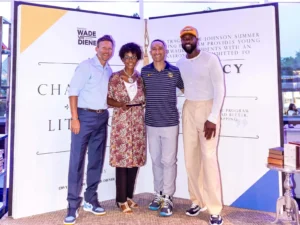
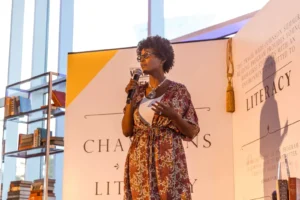
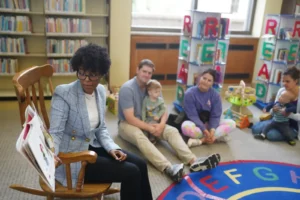
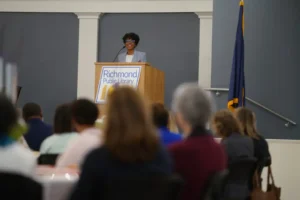
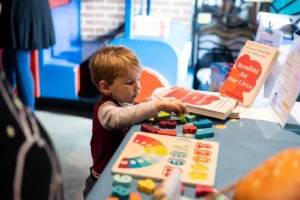
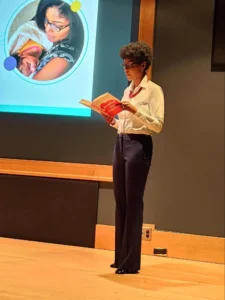
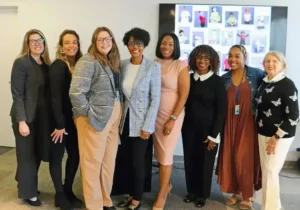
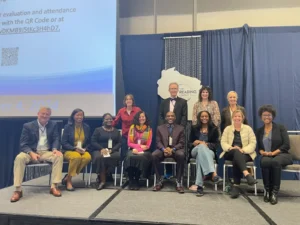
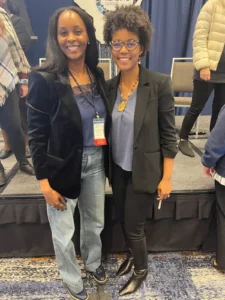

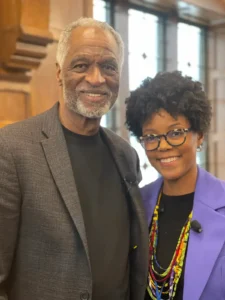
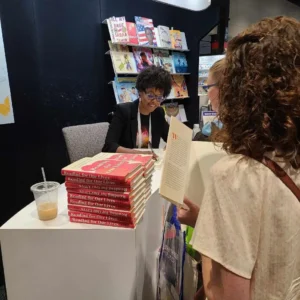
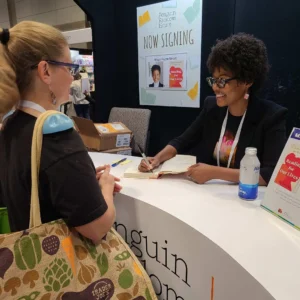
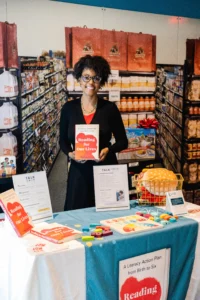
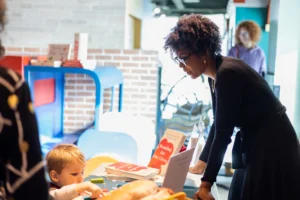

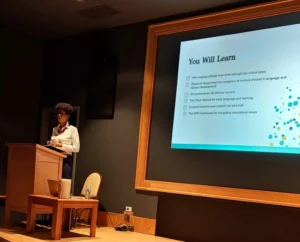
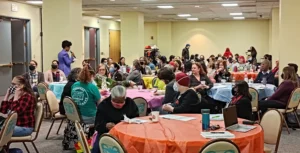
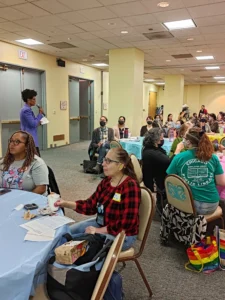
Helping kids develop strong reading skills is critical work with immeasurable ROI for society. In fact, I’m so convinced that fostering mass literacy is the most effective way to make a positive impact on our collective future that I’ve made it my life’s work. And I urge my readers and audiences to do all they can to bring reading to scale in our society by nurturing, teaching, and advocating for the young children in their lives and communities.
People often ask me how they can help support my work to promote literacy (beyond implementing the strategies I teach with any children in their lives). So today I’d like to share some ways that concerned citizens can join me in my mission to bolster literacy for all. Here are a few ways to help.
- Share Reading for Our Lives. I wrote the book to distill the science of reading into clear, actionable advice for parents. When you give it to parents or caregivers of babies and young children, you support them to effectively nurture the next generation of readers. For example, financial advisor Karen Ellenbecker of the podcast Money Sense told me that she gives the book as a present whenever a client has a baby. I love that idea! You can share the book’s message by giving it as a gift to employees, clients, friends, family, neighbors, and so on.
Milwaukee-based Porchlight Books offers excellent bulk pricing—38% or greater discount on 25 or more books. They also do a great job handling special orders if you want to explore bookmarks, bookplates or other customizations. Check out Porchlight’s current pricing. - Host a parent workshop. Consider organizing a program to help parents in your workplace or community get practical strategies for raising skilled, fluent readers from birth. My How to Give Your Child A Smart Start Workshop can be delivered in person or virtually to reach parents in your neck of the woods.
- Sponsor an author visit or program for a local organization. Schools, libraries, children’s museums, and community groups regularly reach out to me about speaking or presenting workshops, but they often can’t fully fund them. Consider making a donation to help cover event costs.
- Host me at a conference or convention. Are you part of an organization or community that may need a keynote speaker or workshop facilitator? If so, keep me in mind to bring a literacy for all focus. I’m available for virtual events and a limited number of in-person events. For 2024, I’m booked for in-person keynotes for library and early-education conferences in Iowa, Idaho, and Maryland. Plus, my virtual How to Give Your Child A Smart Start Workshop is available year-round, since it doesn’t require an airplane to deliver.
- Write a review. If you found Reading for Our Lives helpful, please share your thoughts on Amazon, Goodreads, the online bookseller of your choice, or your own website or social media account. Word of mouth is critical for the success of any book, and online reviews really do help boost the book’s visibility among book buyers, getting the message out more widely to those who need it most.
- Request (and check out) Reading for Our Lives at your library. Librarians are the ultimate book influencers, so putting the book on their radar makes it more likely that they’ll recommend it to patrons or feature it in displays or resources curated especially for parents.
- Help libraries create early literacy kits for families. Middle Georgia Regional Library got a grant to create literacy kits for families to check out that include interactive learning tools and copies of Reading for Our Lives. Supporting libraries to develop such kits is a great way to have a real-world impact and directly support parents and caregivers.
- Signal boost on social media. Follow @mayasmarty on Instagram and like, share, and save the posts that resonate with you. Also, check out my Pinterest page and repin your favorite content. Bonus points if you make your own social posts to highlight the book or any related events you attend.
- Link to Reading for Our Lives or MayaSmart.com from your website. I’ve been honored to be listed in (and linked from) parent resource pages of various organizations, from library family resource pages to educational board game makers.
- Subscribe to my newsletters. Visit www.mayasmart.com/newsletter to sign up to receive weekly free resources for raising readers and nurturing your family’s reading life. No kids at home? No problem. Forward relevant dispatches to others in your network who could benefit. I also have a monthly newsletter for folks who prefer less frequent messages with just the highlights about my literacy outreach efforts, such as recent and upcoming workshops and speeches. This is a great way to stay in the loop.
Know others who may want to help? Please share this post!
Parents of young children are confronted with an avalanche of choices from sun up to sun down. We have to make decisions about everything from how to feed, clothe, and soothe our kids to how to talk, teach, and read to them. With so many little decisions, it’s easy to drown in the details. And when that happens, we’re at risk of overlooking big-picture matters like kids’ language and reading development.
To avoid delaying or undermining our kids’ ability to become thriving readers and writers, though, we’ve got to combat decision fatigue throughout their upbringing and schooling. That’s where my GPS framework comes in. It’s an easy-to-follow, three-step decision-making process for parents that’s designed to help get your bearings straight and clarify next steps, from toddlerhood through college.
- G is for getting grounded in guidelines
- P is for pondering personal experience and observations
- S is for seeking the wisdom of specialists.
Use it in any parenting situation where you want to be sure to proceed thoughtfully and effectively. This framework can help you find your path, whether you’re worried about your child falling “behind,” considering tutoring or assessments, concerned about a school’s quality, or pondering the effects of screen time.
Here’s an excerpt from my book Reading for Our Lives that describes how to navigate parenting decisions with GPS:
When you’re feeling stuck, overwhelmed, or confused at any point on this years-long journey, use this GPS combination to find your way. Literally, stop and take a moment to assess what’s going on with your child. Consider their age and/or grade and then ground yourself in credible reference material, such as developmental milestone guidelines or kindergarten readiness checklists or state learning standards. Take some time to write out some personal thoughts and observations about your child in the moment, relative to what you’ve read. Then consult with a specialist in the relevant area to help you advance your understanding.
Guidelines. Well-researched lists of developmental milestones, school readiness checklists, and grade-level learning standards succinctly distill the best thinking on what to expect of kids when. Look to trusted sources, including the Centers for Disease Control, the National Institutes of Health, theAmerican Academy of Pediatrics, and the National Association for the Education of Young Children, and the International Dyslexia Association for helpful distillation of research findings. Keep in mind that these sources provide useful perspective on typical development—not an ideal path, but an average of many paths.
Personal experience. You bring considerable knowledge and expertise to the table, and it’s maximized when you consciously observe your child and your home, purposefully documenting what you see, hear, and experience. Pay attention to the gut feelings, recurring worries, or even feelings of calm and positivity that are all part of daily life with kids. Write down your observations. List your questions. Journal about what you’ve learned and discovered.
You can collect all of these thoughts in a paper journal on your nightstand or in a notes app on your phone—whatever method is most convenient for you. (Layer in some additional reminders to help you cement the habit, too, whether digital or analog. The best choice between a recurring weekly reminder on your calendar or a Post-it note on your mirror is the prompt you’re most likely to notice and act on.) Journaling, however informal, encourages greater self-awareness and self-knowledge, as well as better attention and attunement to your child’s journey—not to mention a helpful record of your child’s milestones and challenges to share with your village when needed.
Specialist insights. Now, once you’re coming from a place of basic knowledge and awareness, if you sense there’s an issue in your child’s development or you just want to learn more, tap into other people who can help. Sometimes this requires you to expand your network or venture outside of your comfort zone. Ask your pediatrician about the milestone or bring the topic up in a parents’ group. This third step of reaching out, asking questions, and raising issues is critical. It sparks the habit of engaging with others around parenting, counteracts feelings of loneliness, and lessens worries about outside judgment.
All the GPS framework does is codify three steps that many savvy parents already think to do sometimes—so that you’re more likely to repeat them again and again through your parenting years, as you face all manner of challenges, decisions, and issues. You can still consult family and friends, your media of choice, or Google. You’ll just also have a handy prompt to ground your thinking in generally accepted milestones and standards; deep reflection on your child, your family, your aims; and the specific expertise of people working in the space.
One mom I spoke to noticed that her son was below age-expectations in speech starting at his 9-month doctor’s visit and began monitoring it closely. She brought up the issue with his pediatrician and,when he was still behind at 12 months, got a referral to free speech therapy through their county in Colorado.
“For me, taking my own concerns seriously and bringing them up with the pediatrician was key. Then the paperwork to get the evaluation took a while, but I tried to stay on top of that,” she explained. “I also think looping in experts does help in this case. We heard a lot of well-meaning family and friends say, ‘so-and-so’s kid didn’t talk at all until she was three, and now she never stops talking’ or ‘all second children talk late.’ Those can be true, but it was also true in our case that our son had a developmental delay, that is about more than just words, but about how he communicates with us.”
And, as you know, it’s also about his long-term literacy prospects, because oral-language development is so intimately tied to vocabulary, comprehension, and the language of reading instruction.
Reprinted with permission From READING FOR OUR LIVES by Maya Payne Smart, published by AVERY, an imprint of Penguin Publishing Group, a division of Penguin Random House, LLC. Copyright © 2022 by Maya Payne Smart.
While older kids may struggle with poetry, younger kids can’t seem to get enough of it. Traditionally at least, nursery rhymes and songs have been children’s first exposure to poetry—they learn them as babies, then carry them into the playground through childhood games. Look at the baby books in your local bookstore or library, and you’ll likely see rhyming texts outweigh others by many multiples. And many little ones start making up their own songs and poems almost as soon as they start speaking.
When I started reading with my baby daughter, I noticed she seemed to enjoy and pay attention to rhyming books more than others. On the flip side, she got more impatient with board books that didn’t rhyme, no matter how beautiful or colorful the illustrations. Later, when she started putting words together, she would often join in at the end of each rhyming line as we read, either with the correct word or with a sound that came close to it.
But what is it about poetry for kids and rhyming that is such music to young children’s ears? And how can rhyming picture books and poetry books help with engaging little readers and developing literacy? Let’s delve into the benefits of rhyme, plus how to incorporate poetry and rhyme into everyday life with little ones.
Kids Love Rhyme
If you want to encourage your child’s love of reading, follow their lead. Expose them to a variety of books, stories, and formats, but pay attention to what they gravitate towards—that’s what will hook them on reading. And if what they pick out happens to be rhyming stories, there’s wisdom in that.
Kids find the rhythm and predictability of rhyming poetry oh-so-satisfying. The tempo taps into the appeal of music and dance. The sing-song cadences mimic infant-directed speech, or “baby talk,” which drives language learning and connection. And there’s a gratifying build-up of anticipation towards the end of each rhyming line. Knowing or guessing what will come next builds their confidence and encourages them to join in.
Indeed, one recent survey found that children and young people who read poetry enjoyed reading more than those who didn’t—62% vs 42%. Whatever is behind that correlation, it’s a reminder about the joys of poetry.
Poems for children and rhyming picture books also tend to be short, which is great for those young attention spans. And many are funny, silly, even subversive, delighting younger children and keeping them motivated.
The bottom line? Give time to rhyme!
Rhyming Books Boost Literacy & Language
But rhyming poetry texts aren’t just fun. They also pull their weight in developing early literacy. Think of the rhyming and alliterative sounds as starter pieces in the language puzzle, attention-grabbing and easy for little brains to grasp. Over time, these developing brains figure out how the sounds fit together and make sense, paving the way for talking, reading, and writing.
Rhymes and alliteration highlight key elements of language, boosting kids’ phonological awareness—the ability to recognize units of spoken language, such as syllables and the beginning and ending sounds of words.
For example, the great majority of two-syllable English words start with a stressed syllable, and so a stressed syllable can alert babies and toddlers that a new word is starting. Listening to the kind of repeated rhythmic cues found in rhyming poetry reinforces this signaling.
Similarly, kids can hear the rhyme and alliteration of “pitter-pat” and “kitty cat.” They might even be able to break down the sounds, tap out the rhythm, and create their own rhymes to match. When it comes to learning to read and write, these phonological skills help them learn to sound out words, because they already have a trove of letter-sound relationships to draw on.
Rhyming poetry is also easy for young kids to remember—in fact, they’re better at memorizing poems than grown-ups. And this repeated exposure to words and sounds builds their phonological awareness and vocabulary.
How To Choose Rhyming Books & Poetry For Kids
Again, the number one takeaway is to encourage your child’s tastes. You may find that there are particular authors or poets that tend to be a hit with them—my daughter loved Rachel Bright, Michael Rosen, and Julia Donaldson, to name a few.
Variety is also good, though, and here you can exercise some judgment. Look out for books and authors who don’t just use rhyme for the sake of it, but those that use it to enhance their storytelling. For every beautifully written rhyming children’s book, there are countless others that may be almost unbearable to listen to or read aloud, whether due to forced rhymes, clunky meter, or because the story and rhyme feel shoe-horned together.
Ideally, rhyme should elevate the story and help it to flow, not hold it up. You can also look for lyrical books that use elements of rhyme, but aren’t written in a strict meter, and song-based picture books that kids can sing along to, like Wonky Donkey and What a Wonderful World.
Side note on language: simpler may be better. Some figurative poetic language that uses metaphors to compare one thing to another might be too complex for younger readers to follow. This can make it distracting in itself, especially if it’s on the abstract side.
Bring Rhyme Into Everyday Family Life
Of course, reading together is just one way you can enjoy rhymes and poetry with your kids. So if rhyming is your family jam, why not celebrate, practice, and integrate it outside of story time, too?
Starter ideas: favorite a few playlists to listen to in the car, make up your own rhymes and songs as you go through everyday routines, create collections of rhyming objects, watch videos and live performances of poetry and songs, and have fun with rhyming wordplay games.
Ready to dive into poetry and rhyming books with your kids? Check out our book lists for inspiration!

